Exch w/ Turkers
website, dialogues, book, 2020.
Partnership with aarea and Group on Artificial Intelligence and Art (GAIA, C4AI, Inova USP).
> https://exchanges.withturkers.net/

Exch w/ Turkers is a website that brings to light the role played by humans in running Artificial Intelligence (AI), as well as their working conditions. Though frequently labeled as automatic and autonomous, AIs depend on work done by humans.
In the project’s chat window, one can chat with some of the individuals who carry out Human Intelligence Tasks (HITs), small tasks that are used in the development of AI data banks.
Exch w/ Turkers had two stages.
The first was a website where people could talk to these workers: https://exchanges.withturkers.net/
The second stage was the production of a book with the best parts of these conversations, plus footnotes that were carried out months later by the same workers. In these footnotes, they can complement their answers, reinforce or disagree with what they had previously written, etc. See here the pdf.
* The Exch w/ Turkers project was conceived and developed by Bruno Moreschi, Bernardo Fontes, Guilherme Falcão and Gabriel Pereira in the context of the GAIA group. An important part of the website's programming was carried out by Luciano Ratamero, who we thank immensely for the commitment. Aarea's technology and infrastructure consultant: Adriano Ferrari.
* The project will be on show at the www.aarea.co from March 13th to 27th 2020, allowing visitors to communicate with the Turkers. After this date, the site will be transferred in a static version to exchanges.withturkers.net.
* For more information of turkers, we recommend this reading list.
In the project’s chat window, one can chat with some of the individuals who carry out Human Intelligence Tasks (HITs), small tasks that are used in the development of AI data banks.
Exch w/ Turkers had two stages.
The first was a website where people could talk to these workers: https://exchanges.withturkers.net/
The second stage was the production of a book with the best parts of these conversations, plus footnotes that were carried out months later by the same workers. In these footnotes, they can complement their answers, reinforce or disagree with what they had previously written, etc. See here the pdf.
* The Exch w/ Turkers project was conceived and developed by Bruno Moreschi, Bernardo Fontes, Guilherme Falcão and Gabriel Pereira in the context of the GAIA group. An important part of the website's programming was carried out by Luciano Ratamero, who we thank immensely for the commitment. Aarea's technology and infrastructure consultant: Adriano Ferrari.
* The project will be on show at the www.aarea.co from March 13th to 27th 2020, allowing visitors to communicate with the Turkers. After this date, the site will be transferred in a static version to exchanges.withturkers.net.
* For more information of turkers, we recommend this reading list.


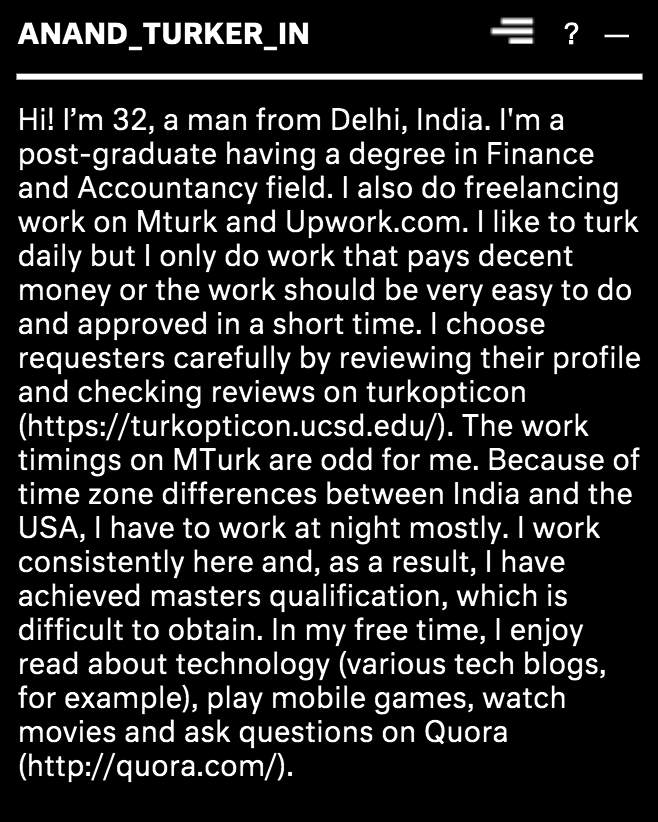

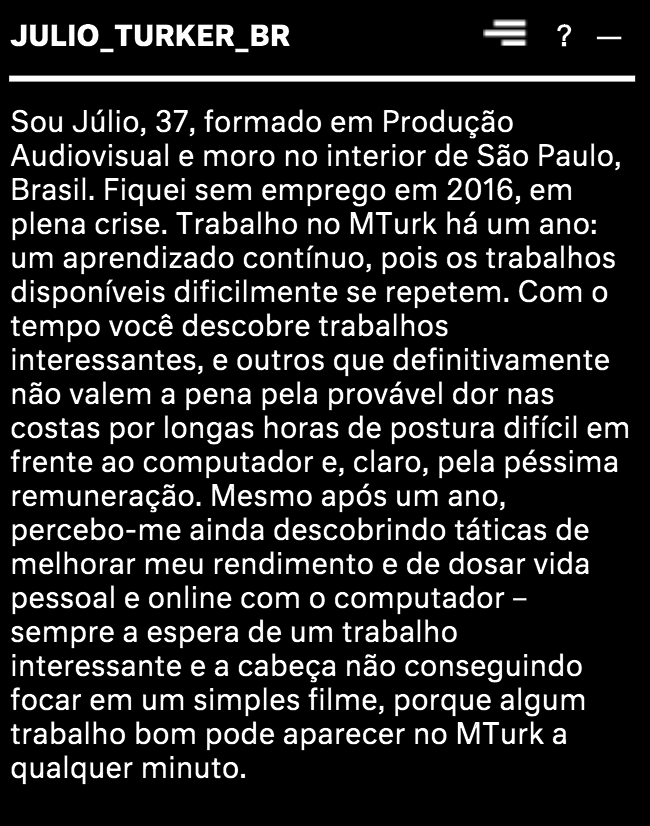
Turkers Bios.
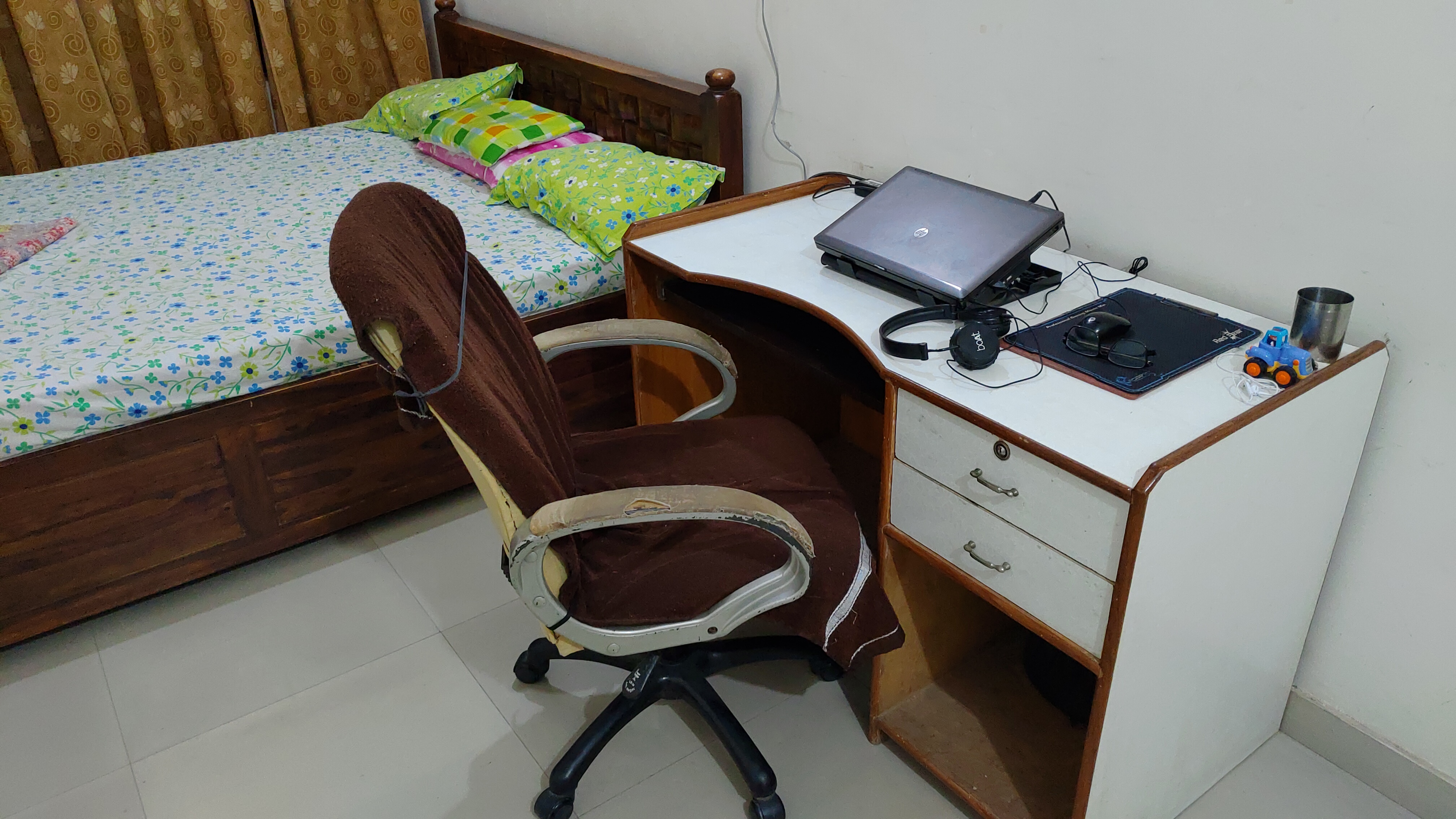
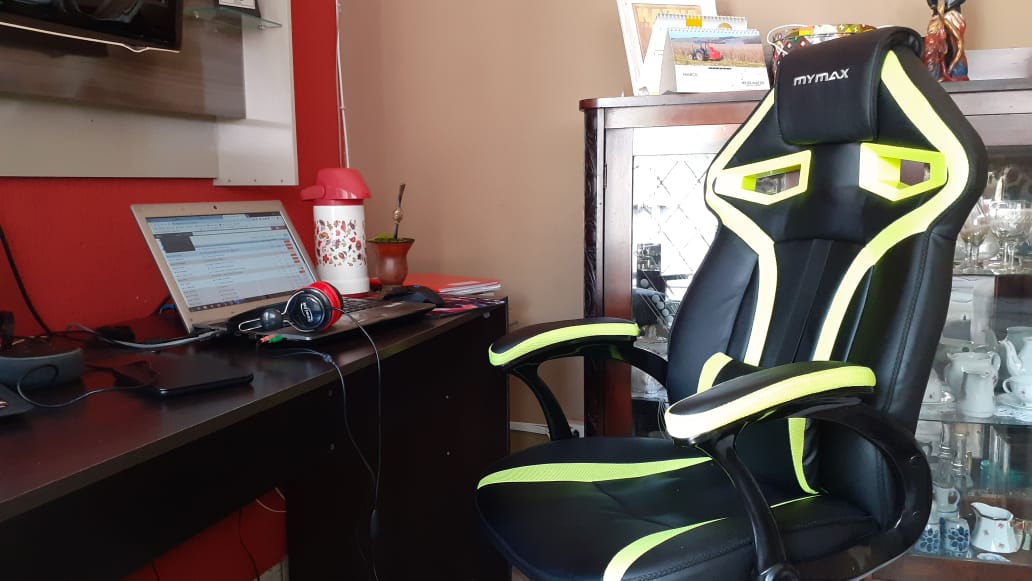
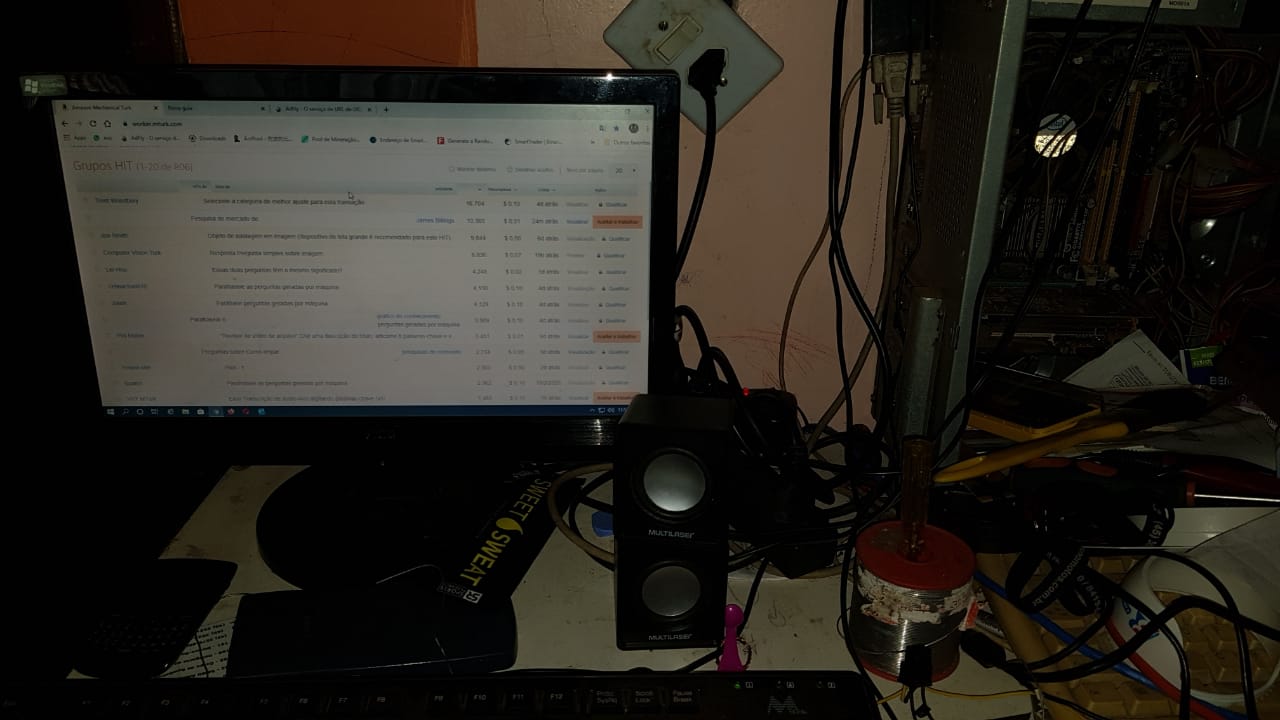
Turkers' working environment = their own homes.

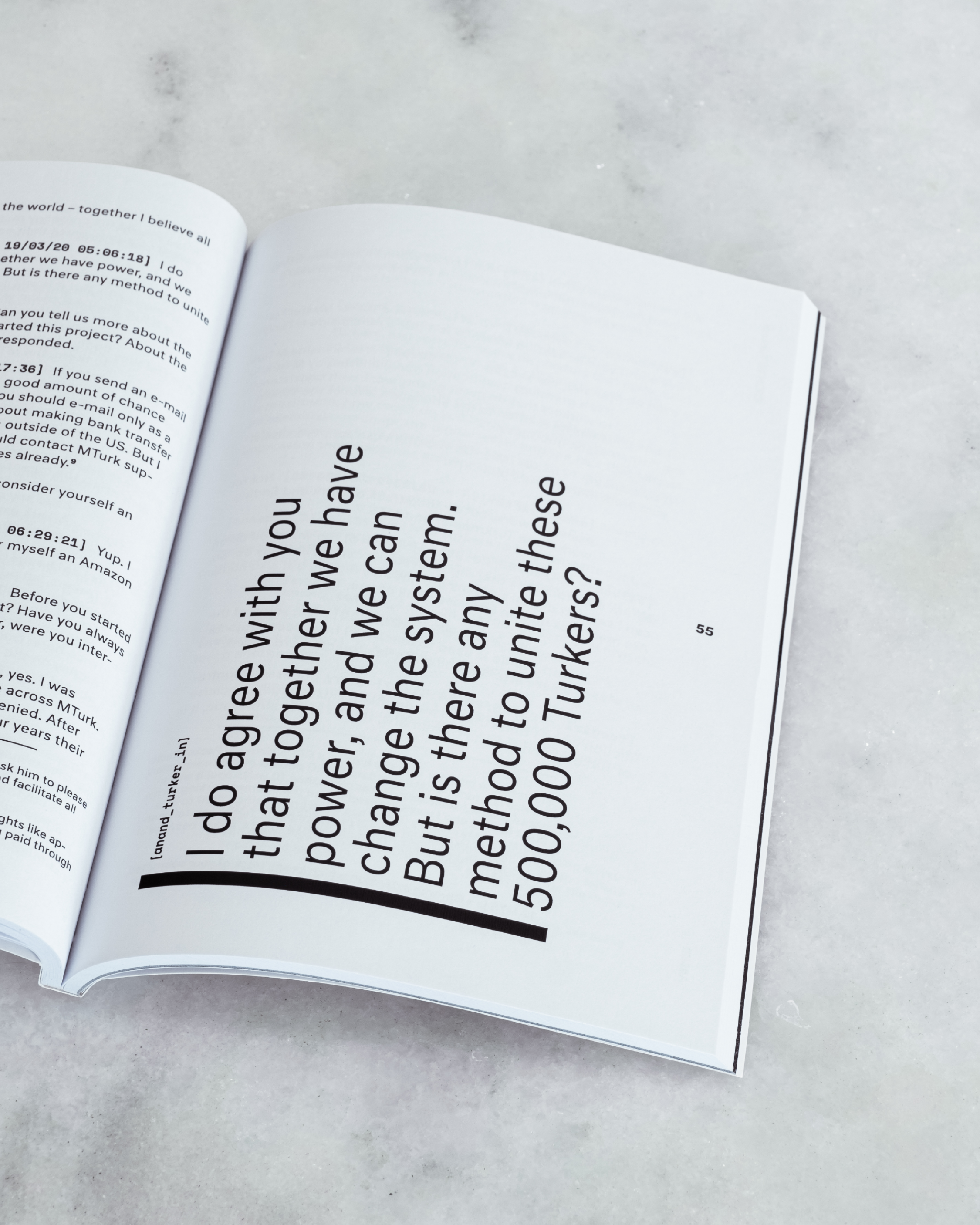
See here the pdf.